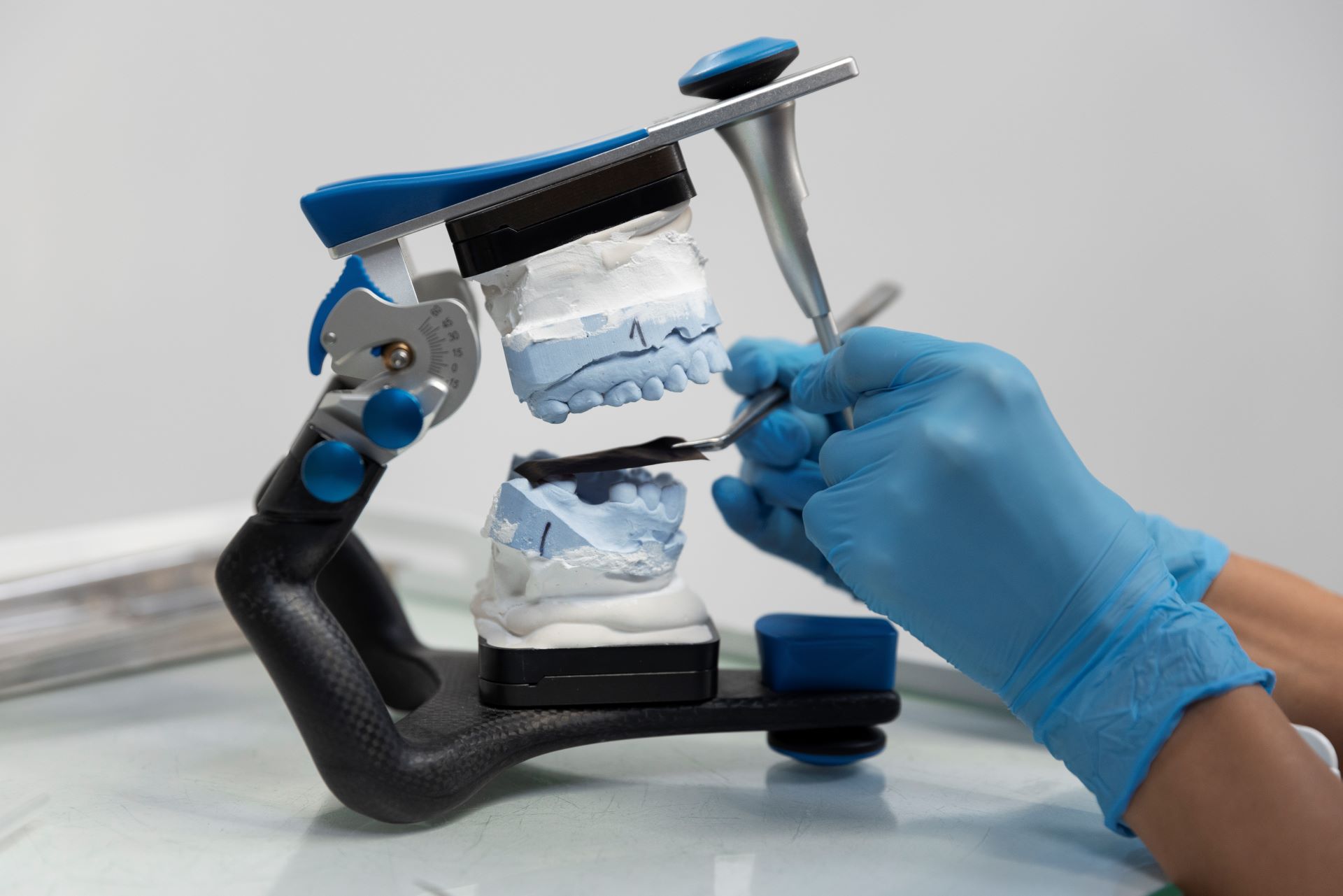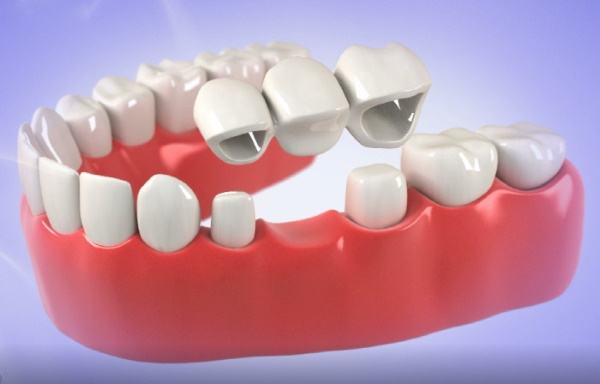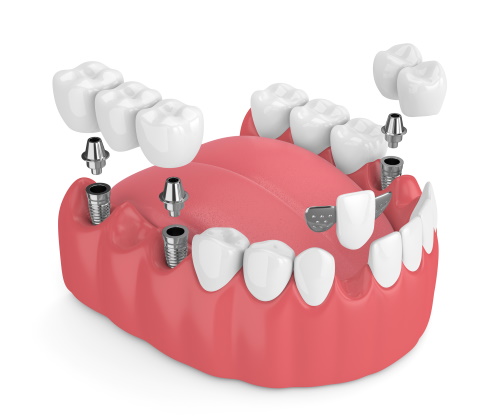
Understanding Dental Bridges: Types, Benefits, and Costs
If you have missing teeth, a dental bridge can be an excellent solution to restore your smile and improve oral function. Dental bridges are a common restorative dentistry option designed
Bridges are fixed Restorative dental appliances used to replace missing tooth by getting support from the adjacent health teeth on either side of the gap. The teeth that support the bridge are called abutment while the ones that fill the gap are called pontics. Compared to conventional removable dentures, the bridges cannot be removed. Only your dentist will be able to remove the bridge when necessary.
Traditional dental bridge is made of false tooth or the tooth held in place by dental crowns cemented into each of the abutment teeth.
This is the most popular type of bridge and it can be used when you have natural teeth on both sides of the gap created by the missing tooth.


Cantilever dental bridge has a pontic held in place by a dental crown cemented on the abutment tooth.
A cantilever will only need one tooth next to the missing tooth gap to work.
Maryland dental bridge is like a traditional bridge but uses two natural abutment teeth on both sides of the gap. Maryland bridge has framework made of metal or porcelain that are bonded at the backs of the abutment teeth.
Similar to a traditional bridge, Maryland dental bridge will only work if there are natural teeth on each side of the gap.


Implant-supported use dental implants as support for the bridge instead of crowns or frameworks. Normally, the implants are placed to the patient’s mouth surgically for each missing tooth, but there are cases as opposed to crowns or frameworks.
Typically, one implant is surgically placed for every missing tooth, but there are cases where that doesn’t work and in that case, a bridge may have a pontic suspended between two crowns.
Each tooth relies on the neighboring tooth for strength and support. If you lose one tooth, the neighboring tooth will shift on the gap and since there is not enough support the teeth can tilt or become lose themselves, adding more problems to the teeth.
The nearby jaw can also shift which later on affects the bite and places stress on the teeth and jaw joint. It is also susceptible to decay because they are now harder to clean. Moreover, the jawbone can shrink which can result in shrunken cheeks and distorted lips. A bridge fills in that gap and prevents any other oral health problems from occurring in the future.
Now that you have an idea of the various types of bridges and how they work, now let us discuss the pros and cons of dental bridges.
Dental bridges are not invasive compared to dental implants, and it does not require precision compared to implants. Additionally, the cost of dental bridges is cheaper than dental implants.
When the tooth is missing in the mouth for a while, the jawbone holding it in place may have already weakened or resorbed. Bone grafting is a surgical procedure that can help straighten the jawbone by placing artificial or animal bone fragments on it. This type of treatment is not needed for dental bridges.
Dentists usually suggest bridges over dentures especially if the patient has plenty of teeth left. Healthy teeth will act as anchors to the bridges compared to dentures that will need gums to anchor and require a temporary sealant that is not always secure.
Bridges are quicker to install compared to implants simply because bridges do not require bone grafting. Even if a few implants are placed to anchor the bridge, it is faster compared to getting more implants.
When the abutment tooth is damaged, it can compromise the bridge. If the abutment teeth are not strong enough to support the bridge it may collapse.
The abutment teeth can also get weaker due to this procedure and might have to be replaced with dental implants if it becomes damaged.
If the crowns do not properly fit, bacteria and plaque may get inside the tooth and cause tooth decay. The crowns may also affect the structure of the teeth which can later affect your bite.
Traditional bridges consist of crowns, the artificial tooth in the center that will be the replacement of the missing tooth. The artificial teeth and crowns can be made of materials like alloy, porcelain, gold, or a combination of materials made in the laboratory as one piece.
The teeth on both sides of the tooth are shaped by the dentist so that they can place crowns on them.
The dentist then cements the bridges into the patient’s mouth.


Proper care and maintenance of the crowns can make it last for 15 years or even longer. Here are some methods to take care of your dental bridge.
Cost for a dental bridge at Highland Oak Dental is estimated to range from $1,500 to $5,000; depending on the type of bridge you select. A Traditional teeth bridge typically costs between $2,000 – $5,000 for a pontic and a crown for each abutment tooth. Maryland teeth bridges vary between $1,500 and $2,500 for one pontic.
This can be affordable as dental insurance does help pay for tooth bridges. Price increases for an all-porcelain bridge than for a metal or porcelain-fused bridge.

If you are missing one or more teeth, the best answer is a dental bridge. Schedule an appointment and see why our patients at Frisco, Texas have confident smiles. If you are nearby, we’ll be glad to assist you and answer any questions you have about this treatment. Don’t suffer from missing teeth anymore.
Affordable Advanced expertise in fixed teeth restorations.
Fixed dental bridges are attached to the teeth permanently and it cannot be removed. These are attached with a dental cement to keep it in place. It is possible to have a removable bridge through implant-supported prosthetic, but it is often used in cases where the gap is too large or there is not enough healthy teeth to support it. Highland Oak Dental will make sure that your dentures are of its highest quality.
It depends on your situation, the condition of the surrounding teeth and the patient’s oral health. In most cases, a bridge can be fitted immediately after extraction, but our Highland Oak Dental office highly recommends to wait for 8 to 12 weeks so that the area around the jawbone and around the extraction site are completely healed and the swelling has gone down.
A dentist that is near where you live, work, or go to school is important when you are trying to save time and money. Expect to have a few treatment or follow-up appointments in addition to your routine visits later. Having a dental office nearby will make things easier. Look for specialists with excellent reviews for dental bridges and the one you’ll be happy working with.
Schedule a complimentary appointment to get new teeth restorations.
Sources: Resin-Bonded Bridges – the Problem or the Solution? Part 1- Assessment and Design

If you have missing teeth, a dental bridge can be an excellent solution to restore your smile and improve oral function. Dental bridges are a common restorative dentistry option designed

Caring for Your Teeth Bridges Dental bridges are secured to your teeth; therefore there are cases where food particles may get embedded beneath them. Therefore, you need to take the

What are the Benefits of Teeth Bridges? If you’re having second thoughts about Dental Bridges and is considering conventional removable dentures then let’s discuss why dental bridges are better for you.
At Highland Oak Dental, our vision is to establish a trusted dental practice renowned for exceptional care, rooted in quality, compassion, and a comprehensive approach.